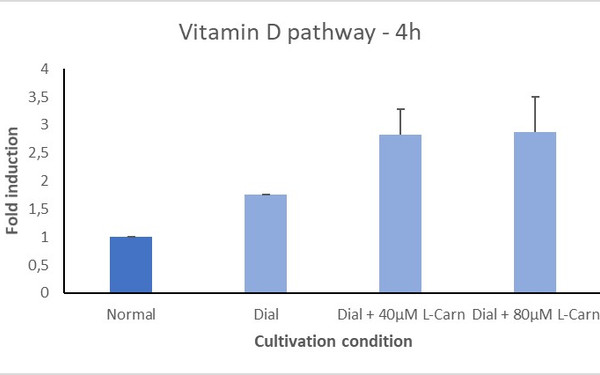Spotlights
PC-3 cells (primary prostate carcinoma) treated with superTK1 plus/minus induction with doxycyclin and different dTh levels
The engineered superTK1 is locally administered to tumor cells as gene therapeutic (AAVsuperTK1). Cytostatic as well as cytotoxic effects on tumor cells are exerted in a time dependent manner at very low deoxythymidine levels (dTh ≥ 10µM). In the case of systemic exposure these very low dTh concentra¬tions hardly entail any side effects to healthy cells and the organism. Combination treatment with cytostatics (e.g. 5-FU, AraC) is possible in a similar low concentration range (5µM). Therefore marginal side effects without diminishing treatment efficacy can be expected.
Induction of the Vitamin D signaling pathway by L-carnitine in WRL68 human liver cells
L-carnitine has an apparent time-dependent effect on the activity of the vitamin D nuclear receptor pathway. Supplementation of L-carnitine to WRL68 liver cells for 4 hours leads to an immediate increase in activity of the vitamin D signaling activity (up to 2.88-fold induction). However after 24 hours this effect cannot be observed anymore since L-carnitine got completely metabolized in this fraction of time. This example clearly shows the immediate effects L-carnitine has on some important nuclear receptor pathways.

